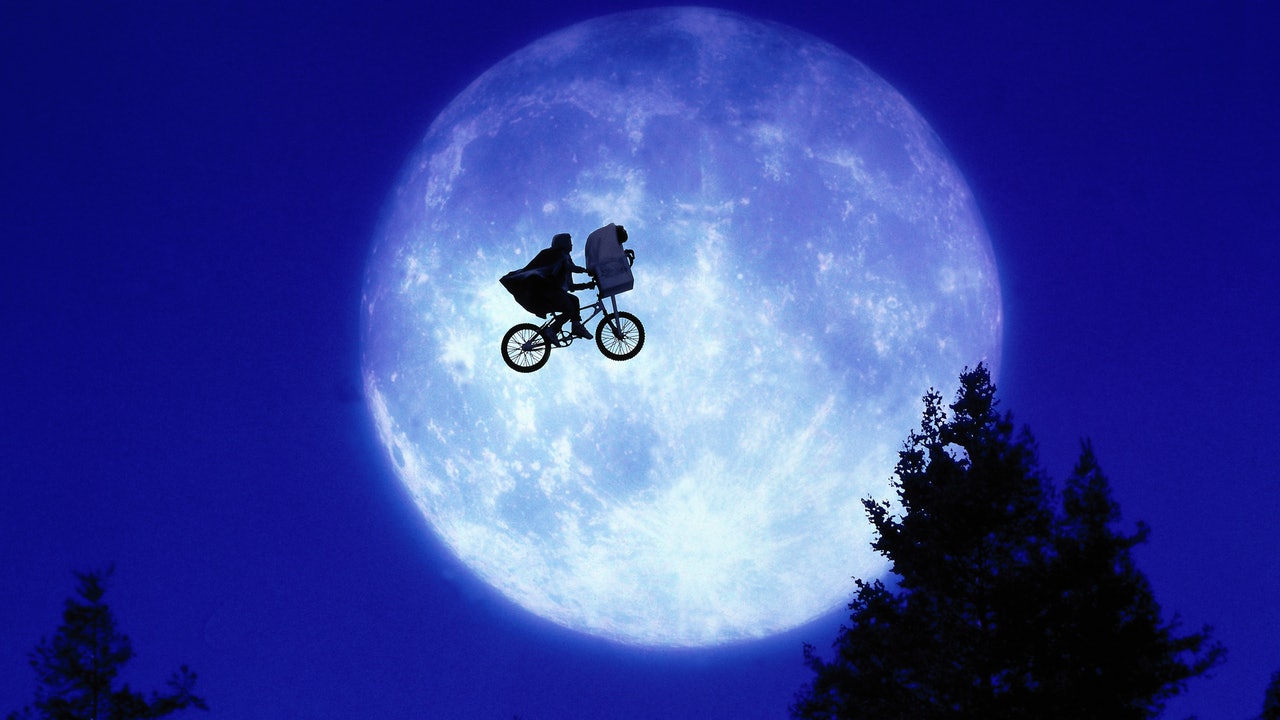
Science fiction geared towards children has been trying to harness the magic of E.T. the Extra-Terrestrial ever since its release 40 years ago.
John Williams’ score, and the tremendous chemistry among its kid actors (Henry Thomas as Elliott, Robert MacNaughton as Michael, Drew Barrymore as Gertie), were intrinsic to E.T.’s legendary status, but Melissa Mathison’s writing and Steven Spielberg’s visionary direction are what sealed E.T.’s status as a standout flick above the alien feature fray.
E.T. came in peace
E.T. didn’t want to eat brains, but rather Reese’s Pieces, and he wanted to return to his world rather than conquer ours. It was easy for the children he encounters on Earth — and in the audience — to understand his peaceful intentions, but the film’s adults, suspicious of foreigners and tainted by a loss of innocence, were more skeptical of his motives.
Ultimately, E.T. was able to achieve a stamp of approval because it tugged on heartstrings and upped the ante of the little guy’s precarious situation in the San Fernando Valley without ever putting a weapon in his spindly hand.

It’s notoriously difficult to strike a family friendly tone with sci-fi, as so much of the genres relies on themes that veer into military propaganda. Invasions of Earth and wars in galaxies far, far away reinforce the message that problems can only be solved by shooting them. It’s not that children can’t enjoy these, but when super-soldiers are the only heroes there are no child characters for kids to see themselves in.
E.T. was able to incorporate childlike wonder and naïveté into a sci-fi movie, and it did so with great success: It was the highest grossing film of all-time for 11 years until Spielberg bested himself with Jurassic Park in 1993, it was deemed “culturally, historically, and aesthetically significant” by the Library of Congress in 1994, and it still enjoys a positive reputation today.
In achieving all of this, E.T. established a trope that was new in 1982 but has been imitated relentlessly since. The Iron Giant, Lilo & Stitch, Adventure Time and the Sonic the Hedgehog films are just a few of the myriad of modern takes on “human befriends lovable otherworldly being.”
The dawn of family-friendly sci-fi
Perhaps the most important contribution E.T. made to genre films was to put kids first, but not at the expense of the parents who took them to the theater. Creations that were smart (but not too heady for the kiddos to comprehend), provocative (but without graphic gore), and full of humor and warmth (but not too cringey or maudlin) were rare. Either mainstream sci-fi was for adults, or it was kiddie junk that stupefied parents.

E.T.’s popularity gave Hollywood the confidence to make children the stars of genre films that could be enjoyable for both youngsters and youngsters (at heart): The Goonies, Stand by Me, Flight of the Navigator, The Gremlins, The NeverEnding Story, The Lost Boys, Explorers, and Big were among a slew of ‘80s flicks with tweens and teens front and center released in the 80s, shortly after E.T.’s debut.
Now we’re seeing the power of romanticizing the childhoods that E.T. fueled: From Stranger Things and Dark, to the It reboot, to Spielberg’s own Ready Player One, this latest trend shows no signs of disappearing anytime soon. None of this would be possible without E.T. which, ironically, had no time for the darkness at the center of all those hits. 40 years later, maybe its greatest legacy is to remind us that it’s often good to look at the world through a child’s eyes.







